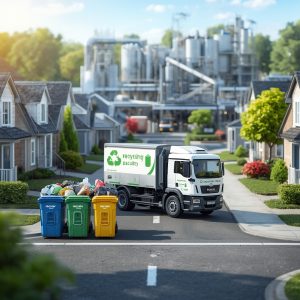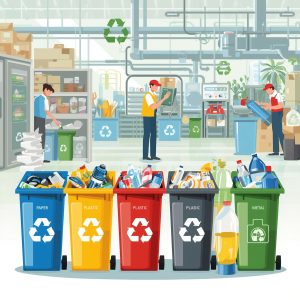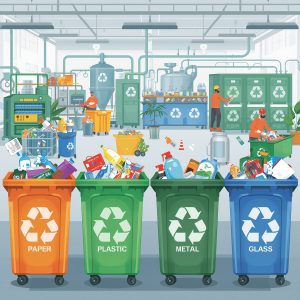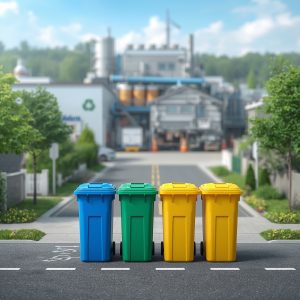How Recycling Really Works
In today’s environmentally conscious world, understanding how recycling really works is more important than ever. Every day, millions of people toss bottles, cans, and boxes into blue bins, believing they are doing their part to protect the planet. Yet, few truly understand what happens after the recycling truck drives away. The journey of waste materials through the recycling system involves a complex network of sorting facilities, reprocessing plants, and manufacturers who transform discarded items into new products. By learning how recycling really works, individuals can make smarter choices, reduce contamination in recycling streams, and support a more circular economy.

The Real Purpose of Recycling
At its core, recycling aims to conserve natural resources and reduce the burden on landfills. When materials such as glass, plastic, paper, and metal are reused, we minimize the need for virgin raw materials. For instance, recycling aluminum uses 95% less energy than producing it from bauxite ore. Similarly, paper recycling saves millions of trees each year while also reducing water and energy consumption. Understanding how recycling really works allows us to appreciate its true value—not just as a waste management tool, but as a sustainable economic system.
Modern recycling systems focus on a circular approach—keeping materials in continuous use rather than following a linear “take, make, dispose” model. This circular economy relies on three crucial steps: collection, sorting, and reprocessing. Each step determines whether materials can re-enter the production cycle efficiently. When people understand this process, they’re better equipped to make choices that enhance recycling’s effectiveness.
Collection and Sorting
The recycling process begins the moment a household or business places items in a designated bin. However, the effectiveness of recycling depends heavily on what goes into those bins. Many people unknowingly contaminate recyclables by adding non-recyclable materials—like greasy pizza boxes or plastic bags. Contamination increases costs and decreases efficiency at sorting facilities.

Once collected, recyclables are transported to a Material Recovery Facility (MRF). At the MRF, the sorting process begins. High-tech machines and trained workers separate items based on material type and quality. Magnets attract metals, optical sorters identify plastics by resin codes, and air jets divert lightweight materials. This stage highlights how recycling really works behind the scenes, where technology and human effort combine to ensure that only clean, viable materials proceed to the next stage.
The better the sorting, the more valuable the output. Contaminated loads often end up in landfills, which undermines the purpose of recycling. Communities that invest in public education about proper recycling practices often achieve higher recovery rates and cleaner material streams.
The Science of Reprocessing
After sorting, materials head to specialized reprocessing plants. Here, each material follows a different path:
-
Plastics are shredded into small flakes, washed, melted, and formed into pellets that serve as raw material for new plastic goods.
-
Paper is pulped, cleaned of ink and adhesives, and transformed into new sheets or cardboard.
-
Metals are melted down and recast, while glass is crushed into cullet and melted to make new bottles or jars.
This phase reveals the industrial complexity of how recycling really works. Recycling isn’t just about tossing waste into bins—it’s about integrating advanced chemistry, engineering, and logistics to transform old materials into valuable new products. Each cycle saves resources and energy while preventing pollution.
However, not every item can be infinitely recycled. Paper fibers degrade after five to seven cycles. Plastics can lose integrity after being melted multiple times. Metals, on the other hand, are infinitely recyclable without loss of quality—making aluminum and steel some of the most valuable recyclable materials in the world.
Economic and Environmental Impact
Recycling plays a vital role in both the economy and the environment. The global recycling industry generates billions of dollars annually and supports millions of jobs—from collection workers to material scientists. For local governments, effective recycling programs can reduce landfill costs and even generate revenue from selling high-quality recyclables.
Environmentally, the benefits are profound. Recycling reduces greenhouse gas emissions, conserves energy, and decreases the need for new raw materials. For example, recycling one ton of paper saves about 17 trees and 7,000 gallons of water. Every ton of recycled steel saves over 2,500 pounds of iron ore. Understanding how recycling really works highlights how small individual actions can collectively make a massive environmental difference.
Still, challenges persist. Global markets for recyclables fluctuate, and the 2018 Chinese import ban on contaminated recyclables forced many countries to re-evaluate their systems. Today, innovation and investment in domestic recycling infrastructure are more important than ever. Localized systems not only reduce transportation emissions but also stabilize markets by keeping materials within regional supply chains.
The Role of Technology and Innovation
Technology continues to redefine how recycling really works. Artificial intelligence, robotics, and machine learning now play significant roles in improving sorting accuracy and reducing contamination. Smart sensors can detect material composition instantly, ensuring better separation at MRFs. AI-powered cameras can distinguish between recyclable and non-recyclable plastics, drastically improving recovery rates.
In addition, innovations in product design are helping create more recyclable products from the start. Companies are adopting eco-friendly packaging, minimizing the use of mixed materials that are hard to recycle. For example, beverage manufacturers now use single-type plastics instead of complex composites, making the recycling process more efficient. These efforts demonstrate that recycling success begins not just at disposal, but at design.
Consumer Responsibility and Behavioral Change
Recycling only works when individuals participate responsibly. Consumers play an essential role in ensuring materials enter the right stream. By cleaning containers, removing caps, and avoiding wish-cycling (placing non-recyclables in the bin “just in case”), households can drastically improve recycling efficiency.
Education is crucial. Schools, communities, and businesses must spread awareness about how recycling really works. Public outreach campaigns, labeling systems, and mobile apps can guide people on what’s recyclable in their area. The more informed individuals are, the more effective the recycling process becomes.

Moreover, consumers can take the initiative beyond recycling bins. Supporting products made from recycled materials, choosing minimal packaging, and advocating for better recycling policies all contribute to long-term change. Sustainability isn’t just about what we discard—it’s about the entire cycle of consumption and production.
Recycling Myths and Misconceptions
Despite good intentions, many misconceptions about recycling persist. Some believe that everything placed in the recycling bin is automatically recycled, but that’s far from reality. If materials are contaminated or lack market demand, they often end up in landfills. Others think recycling alone will solve the waste crisis—but it’s just one part of a broader sustainability puzzle that includes reduction, reuse, and responsible production.
Another common myth is that recycling wastes more energy than it saves. Numerous studies prove the opposite: recycling consistently uses less energy compared to producing virgin materials. By understanding how recycling really works, individuals can see that proper recycling is one of the simplest and most effective actions for environmental protection.
Policy and Global Efforts
Governments and international organizations play an essential role in scaling recycling efforts. Legislation such as Extended Producer Responsibility (EPR) holds manufacturers accountable for their products’ end-of-life impact. Countries like Germany and Japan have achieved recycling rates above 60% through stringent waste-sorting laws and public cooperation.
The European Union’s Circular Economy Action Plan and various U.S. state-level mandates continue to promote sustainable production and consumption. At the global level, the UN Sustainable Development Goals emphasize waste reduction and responsible consumption as key pillars for a sustainable future. These policies are changing the way nations handle waste, making recycling a cornerstone of climate action.
Toward a Circular Future
The ultimate goal of understanding how recycling really works is to move toward a fully circular economy—one where waste doesn’t exist, and every product is part of a continuous loop. Businesses, governments, and consumers must collaborate to design products for longevity, repairability, and recyclability. Advances in chemical recycling, biodegradable materials, and renewable energy will further enhance the sustainability of recycling systems.

Emerging technologies like blockchain are also improving material tracking and transparency, ensuring accountability across recycling supply chains. These innovations will help build trust in recycling systems and encourage broader participation.
Conclusion
Learning how recycling really works empowers individuals to take meaningful action for the planet. Recycling isn’t merely a process—it’s a shared responsibility and a vital part of sustainable living. By properly sorting waste, supporting recycled products, and demanding better recycling infrastructure, we contribute to a cleaner, more resilient world.
The next time you toss a bottle or can into the recycling bin, remember that it’s not the end of a product’s life—it’s the beginning of a new one. When we all understand how recycling really works, we can turn everyday waste into a resource for a sustainable future.
